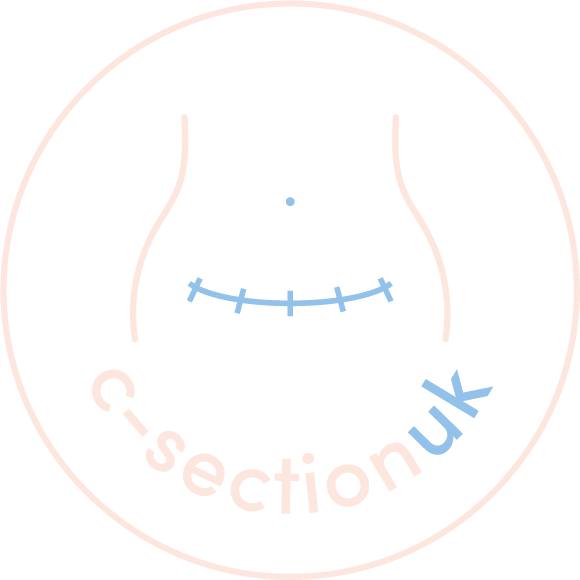C-Section Pouch: A Midwife’s Guide to Recovery & Healing
After a C-Section birth, many women notice a soft, overhanging bulge just above their scar—commonly called the C-Section pouch or “pooch.” It can feel frustrating, unfamiliar, or even upsetting. But you’re not alone, and there are ways to understand, support and care for your postnatal body with compassion. Let’s explore what the pouch is, why it forms and what your options are for healing.
What is a C-Section Pouch?
The C-Section pouch is the name often given to the lower belly overhang that can develop after a caesarean birth. It typically appears just above the scar and may feel soft, puffy or swollen for weeks—or even months—after surgery.
This pouch is not a sign of failure or “doing something wrong.” It’s a common outcome of a complex abdominal surgery combined with the physical changes of pregnancy.
What causes the C-Section pouch to form?
Several factors contribute:
Surgical incision through multiple layers of tissue
Swelling and inflammation during the healing process
Separation of abdominal muscles (diastasis recti)
Changes in fat distribution due to hormones and pregnancy
Scar tissue (adhesions) pulling the skin or tissues unevenly
For some women, the pouch reduces with time. For others, it may linger even with a healthy lifestyle.
Will the C-Section Pouch Go Away on Its Own?
The answer varies. In some cases, the pouch naturally reduces over time, especially with good core recovery and hormonal balance. But in others, it may remain more prominent—especially if muscle separation, scar tissue or significant skin laxity is involved.
It’s important to remember: the pouch is not your fault, and many women experience it—even elite athletes and fitness professionals.
How to Get Rid of the C-Section Pouch Without Surgery
There are non-surgical ways to improve the appearance of the pouch, support healing, and strengthen your body safely after birth.
Core strengthening and physical therapy
Focus on deep core exercises (not crunches) to rebuild strength
Consider working with a postnatal physiotherapist or women’s health specialist
Strengthening the transverse abdominis can reduce bulging
Scar massage and tissue mobilisation
Gently massaging the scar (once healed) can reduce adhesions
Helps with circulation, skin texture, and tissue movement
Can be guided by a physiotherapist or midwife
Diet, hydration and inflammation
Anti-inflammatory foods can reduce bloating and fluid retention
Prioritise protein, fibre and healthy fats to support tissue repair
Stay well-hydrated to support circulation and skin health
Wearing postpartum support garments
Compression wraps or high-waisted postnatal pants can provide gentle support
May help improve posture and reduce pressure on the healing area
Should be worn in moderation—not a replacement for rehab
Check out Midwife Vic’s review of the Momcozy Belly Band here
Time, patience, and consistency
Healing from surgery takes time—sometimes up to a year or more
Consistency in gentle movement, rest, and nutrition is key
Be kind to yourself and avoid harsh self-judgment
Surgical Options for Treating a C-Section Pouch
If the pouch doesn’t respond to lifestyle changes and becomes emotionally or physically distressing, some women consider surgical options.
Tummy tuck (abdominoplasty)
Removes excess skin and fat
Tightens separated abdominal muscles
Often involves moving or reworking the C-Section scar
Mini tummy tuck
Targets the area below the belly button only
Less invasive than a full abdominoplasty
May be suitable for those with smaller pouches
Liposuction
Removes fat, but does not tighten skin or muscles
Often combined with other surgeries for best results
Always consult a board-certified plastic surgeon and allow at least 6–12 months post-birth before considering surgery
How to Reduce a C-Section Pouch Early
In the first few months postpartum:
Rest often, but include gentle walking daily
Avoid heavy lifting or intense core work until cleared by your provider
Wear soft, supportive clothing
Begin pelvic floor exercises as advised
Ask about physiotherapy at your 6–8 week check-up
Early support can help your body return to balance—but don’t rush it. Healing isn’t linear.
Emotional Impact and Body Image
Many women struggle with how their bodies look and feel after a C-Section. The pouch may feel like a reminder of trauma or like a part of your body you didn’t expect.
It’s okay to feel frustrated, sad or even angry. But remember:
Your body grew and birthed a human
You’re not alone—millions of women have a pouch and still feel strong, beautiful, and worthy
Your value isn’t tied to your appearance
Talking to a therapist, midwife or support group like c-sectionUK can help you process these feelings with compassion
Common Questions for C-Section Mums About Their Pouch
Does the C-Section pooch ever go away?
Sometimes, yes—especially with time, core rehab and healthy habits. But for some women, it may remain due to scarring, skin laxity or abdominal changes.
How can I flatten my C-Section pouch?
Start with deep core work, pelvic floor exercises and gentle walking. Avoid high-intensity or traditional ab workouts until your core is strong and stable.
How long does it take to lose the tummy pouch after a C-Section?
There’s no exact timeline. For some, it’s 3–6 months; for others, over a year. It depends on genetics, healing, diastasis recti and other factors
Is it diastasis recti or a C-Section pouch — or both?
They often go hand-in-hand. Diastasis recti is a separation of abdominal muscles that causes bulging. A pouch may include fat, skin and scar tissue on top of that. A physio can assess and guide your recovery.
The C-Section pouch is a natural part of many women’s post-birth journey—and it doesn’t define your strength, beauty or worth. Whether it fades with time, responds to gentle rehab, or leads you to explore further options, your recovery deserves patience, care and kindness. This is your body’s story—and it’s one of resilience.
